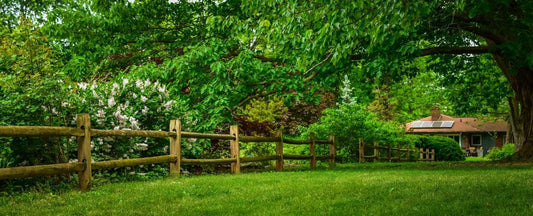How and When to Divide Perennials

Tips to Know When It's Time to Divide Perennials
As the weather begins to cool for fall, it's time to start thinking about which garden plants would benefit from being divided. Labor Day is the traditional "deadline" for dividing Bearded Iris, but that's just a guidepost — where you live, what the weather is doing, and most importantly, how your plants are behaving are the real signals to look for!
First of all, if you're like us, you may be asking yourself, "Do I really have to divide any plants?" And while it's true that the Plant Division Police won't be patrolling your neighborhood, many perennials bloom and grow much better, and can even live longer, if divided every few years. Coreopsis is a prime example; if left alone, it can peter out after a few seasons, but if you take a moment every 2 to 3 years to pull it apart into smaller clumps and re-plant, it will thrive for a long, long time!
Here is a quick list of the perennials that benefit from a late summer to fall division:
- Coral Bells - Mark your calendar to divide this super-easy perennial every 3 years, removing the woody center of the plant and separating the healthy outer parts into several new plants.
- Hardy Garden Phlox - Like heuchera, this plant grows outward, creating a dead woody middle section every few years. If you divide phlox faithfully every 3 years, not only will it live longer and bloom more fully, but it will also be less susceptible to powdery mildew!
- Hardy Geranium - Not every variety of hardy geranium needs dividing, but it's well worth it to break them apart every 2 to 3 years. They fall apart if just pulled gently — no more than a moment's work for so much beautiful color!
- Astilbe - Divide it every 2 to 3 years for best flowering and most vigorous growth.
- Ajuga - This is a spreader, so it takes off like lightning after you divide it. Depending on how fast you need coverage, divide it every 2 to 3 years.
- Hosta - This super-easy, super long-lived foliage plant can be divided any time of year but fall works better than spring because it Leafs out late, so it can hide from you until April or May — by which time you're swamped with other garden chores! When you dig it up, you'll see that the root ball is divided up like a pie. Whack the divisions and you've got new plants!
- Bearded Iris- If time is tight, divide your Iris first— it needs to be divided and re-planted at least 6 weeks before the first frost, to give it time to root securely for winter. Look at the rhizome and cut off any parts that look dead or diseased. Then cut the rest cleanly into pieces, making sure to get at least 2 to 3 eyes in every piece.
- Daylily - The busy gardener's best friend, this perennial is so easy that you can divide it without even digging it up, if you want — just whack the base of the plant into 2 to 4 sections and leave it be! But you'll probably want to re-plant those new divisions elsewhere to increase your beautiful garden.... or possibly even share them with friends!
- Sedum – Tough as nails and totally undemanding, sedum actually loves being divided. Early spring or fall is best— just lift the clump, pull or slice apart the thick, fleshy roots, and replant. It’s nearly impossible to mess up, and your new divisions will take off like nothing happened!
- Monarda – Bee balm spreads fast and can get a little pushy, so dividing every 2–3 years keeps it in check and blooming strong. Spring or early fall works great. Dig up the clump, look for healthy outer growth (ditch the woody middle), and split it like a cake. Replant and watch the pollinators come running!
Tips for Dividing Perennials
- Use a sharp tool– A garden fork, spade, or knife helps make clean cuts without damaging the plant.
- Water before digging– Moist soil is easier to work with, and a well-hydrated plant experiences less stress.
- Dig wide– Start several inches away from the base to avoid cutting into the root system. Gently lift the plant out of the ground.
- Cut cleanly– Use a sharp knife or spade to separate the plant into sections. Each section should have a healthy root system and at least three to five shoots to ensure strong regrowth.
- Replant quickly– Keep the roots moist and replant the divisions as soon as possible at the same depth they were growing before.
- Water well– Give the newly planted divisions a thorough watering to help them establish.
- Choose the right time– Cool, overcast days are best for dividing, as they reduce stress on the plant and prevent excessive moisture loss.


